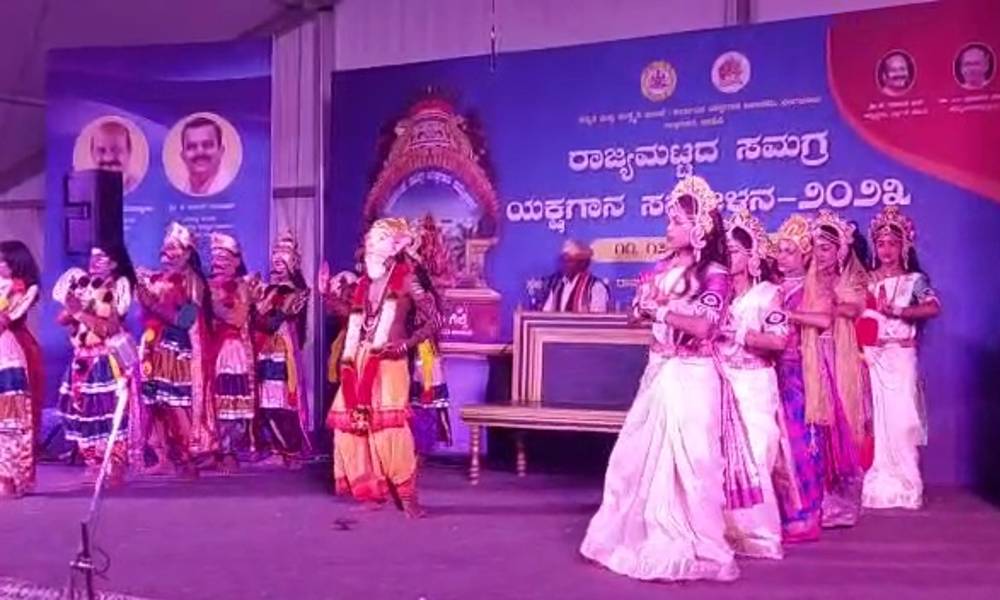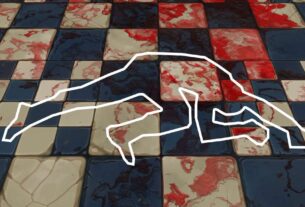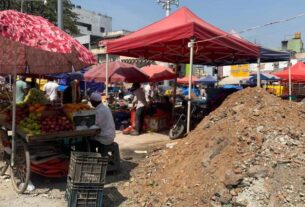Yakshagana artists fall on hard times due to consistent lack of support from the government.
Practitioners of Mudalapaya Yakshagana, the older, traditional style of Karnataka’s art form believe that if the art form is to survive, the government has to intervene quickly—existing support from village audiences will not take it far.
The more modern style, Paduvalapaya, is more popular and has been promoted by various organisations, resulting in it becoming the more recognisable form of the art.
K.M. Shekhar, a Paduvalapaya artist ,who does regular shows in Bangalore and other districts of Karnataka said, “When G. L. Hegde Manaki was the president of the Yakshagana Academy in 2022, we got Rs. 1.10 crore for the promotion and preservation of the art form. But after that the amount has been reduced to Rs. 70- 80 lakh per year. Even from the money the state government provides, most of this grant will go to administration charges and staff salaries. Nothing reaches the artists or training centres.”
Dr Radhakrishna, another similar artist complained about how the government is uninterested. “The government does not show any interest in promoting the art throughout the state. Even veteran artists are neglected and favouritism plays a key role in selecting the trainers. Due to red tapism, the artists do not get their pension on time. There is no system in the government to properly recognize the Yakshagana artists,” he said.
He added that due to the popularity of Paduvalapaya among people the art form survives through private shows and temple funding. Mudalapaya lacks this support, that is why the number of Practitioners are dwindling.
Paduvalapaya is performed mostly in coastal regions in various districts of Dakshina Kannada, Udupi and Uttara Kannada. Mudalapaya is the older form of the Yakshagana, and this dance form is performed in Tumkuru, Bellari, Mysore.
B. Parashuram ,a Mudalapaya artist ,living in Bellary district said, “Mudalapaya is the older art form, it is based around the agricultural communities. Unlike Paduvalayapaya which has spread around Karnataka, Mudalapaya has not been commercialized till now. Our major source of income are village communities who pay us to perform. But in Bangalore, there are no established art centres for Mudalapaya.”
A.R. Puttuswamy a Mudalapaya practioner who lives in Tumkuru district said “After the reform of Paduvalapaya, performers from all castes was included into the form, women were also given entry. These changes came very late into Mudalayapaya. After the recognition of Paduvalapaya, it spread around Karnataka, its popularity grew enormously. Even today any president of Yakshagana academy appointed hails from Paduvalapaya only. Mudalapaya is hardly given any importance by the government.”

He added that the number of Mudapalaya performers arefewer than Paduvalapaya and are on a constant decline. “The number of shows and theatres are few compared to what Paduvalapaya gets.”
B. Parashuram also added that there are hardly any shows organised by the government for the Mudalapaya artists.
He said “The village people are the ones keeping this art alive, there is little to no recognition of this section of the art form in the cities. As the income of common people in villages is shrinking so is the funding. Now very few boys join as a trainee, because they go to the cities for a job. Majority of my students are girls, but the problem is that most of them do not take this art form as a profession. Therefore, carrying it forward is a challenge.”
Panchaksharaih, a resident of a village in Aralaguppe, has arranged for many Yakshagana shows in order to fulfil a Harike (wish to be completed), which is a common belief in several parts of the state. He said “Villagers arrange for Mudalapaya Yakshagana shows in the cultural festivals around the year. But now for jobs or for business many educated and wealthy families are shifting to cities, therefore the scale of performances has come down. The number of performances have also been reduced compared to a decade ago.”
Dr. Radhakrishna said, “The Yakshagana dance showcased during cultural fests and to tourists by the government is Paduvalapaya. Most groups which perform and train people in Bangalore hail from this style .The changes that came in Paduvalapaya are because of Shivram Karanth. He brought modifications to our art form, he also brought discipline and organisation to the form. He brought veteran artists from the costal districts to Bangalore and Mysore. most of them were living hand to mouth back then We owe all the new developments to him.”
He added that the major source of income in this style comes from temples. People organise a Yakshagana dance as a vow to the deity. In many temples of northern and costal Karnataka shows for next 20 years are booked by people. Compared to Paduvalapaya, Mudalapaya has little to no support. There is not much promotion by the government for the art form.
The post of president of the Yakshagana academy has been vacant for over a year now and no new president or committee has been appointed. Balwant Rao Patil, Director of Janapada Academy is currently handling the finances of the Yakshagana Academy. He said, “We don’t know many details about the art form and can’t do much in the matter. When the government appoints a new president, he may take care of all the grievances of artists.”
Paduvalapaya is more popular amongst the two style. Badaguthittu and Thenkuthittu are the two sub-sections of Paduvalapaya. Badaguthittu is performed in the northern coast of Karnataka, while Thenkuthittu is more prevalent in the south.
Yakshagana, was traditionally a one man show accompanied by background musicians. But over the period, Paduvalapaya has evolved by encompassing group performances, limited time performances, and other changes.
“If you see the Yakshagana costume now, people confuse it with Kantara because of media and the film titled ‘Kantara’. They don’t even recognise the art form of their state.” Dr. Radha Krishna Ullar, founder of Kala Kadamba art centre and a Yakshagana performer said. Kantara portrayed bhootakola and not Yakshagana.
“Like Kerala is represented by Kathakali, all the people of Karnataka should know about Yakshagana, Karnataka is represented by Yakshagana,” K.M. Shekhar said.




